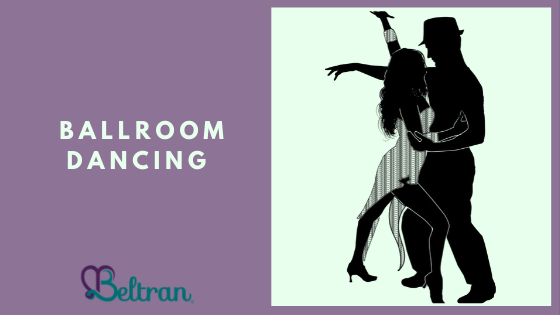Ballroom dancing has existed for hundreds of years, but it’s most celebrated era has been in the past century, rising in popularity with early jazz music. It started as recreation for elites, in contrast with folk dancing of the common people, but now is embraced more broadly.
The term ballroom dancing stems from “ballare,” which in Latin means “to dance.” Here are some other highlights in the evolution of this widespread form of social dance.
Roots of Ballroom Dancing
The earliest evidence of ballroom dancing traces back to France in 1588 with a book called Orchesographie, by Jehan Thoinot’ Arbeau. The book explored various types of French social dance.
Then French musician/dancer Jean-Baptiste Lully introduced new uplifting dancing styles that complemented French Baroque music of the late 17th century. He composed lively ballets with a fast rhythm for existing dances such as gavottes and menuets. By the 1660s, he developed a new dance called the comédie-ballet, a mix of theater, music comedy and ballet. He’s also credited as developing the musical genre of French opera.
Proliferation of Dances
The Waltz had its origins in 16th century Germany, spreading to England by the early 1800s. The dance is characterized by close partners moving to 3/4 time and executing smooth turns. Other ballroom dances that emerged in the 19th century included Tango, Polka, Mazurka, and Schottische. By the early 20th century the Foxtrot emerged as a popular dance similar to the Waltz but in 4/4 time. Other new dances developed in the 1920s Prohibition era were Swing, Charleston, Quickstep, and Tap Dance, followed by Boogie-Woogie the next decade.
The growth of Latin dances spread throughout America during the Jazz and Big Band eras. Latin styles that fused into the American mainstream included Rumba, Jive, Samba, Cha-Cha, Mambo, Merengue, Bolero, and Salsa. While some people consider Latin dance to be part of ballroom dance, a crucial distinction is that Latin dancers are much more rhythmic. Perez Prado was a top recording artist of the 1930s through the 1950s who helped popularize mambo.
Great Depression period films featuring Fred Astaire and Ginger Rogers popularized what became known as “modern ballroom dance.” The Foxtrot became wildly practiced by professionals and hobbyists in this period.
Survival of Ballroom Dancing
A few dance crazes since the golden age have kept the art of ballroom dance alive. Michael Jackson introduced the “MoonWalk” in the 80s, and then the Lambada became an infectious trend in the same decade. In the new millennium reality TV show competitions such as Dancing With the Stars and So You Think You Can Dance have fueled continued interest in traditional dances.
